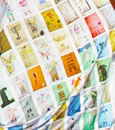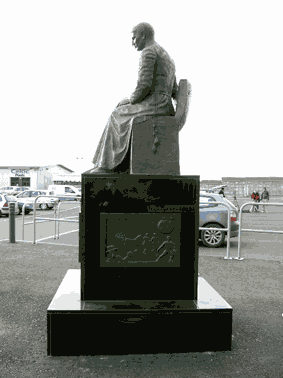| KATE ROBINSON |
|
|
Brother Walfrid
|
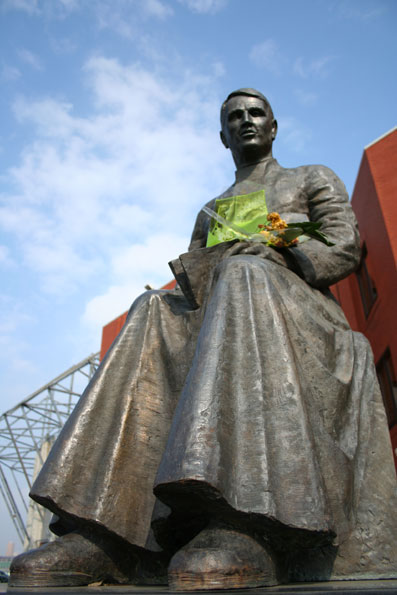 |
|
| 2D/ Text | ||
| Bio/Contact | ||
Scroll down for more images |
||
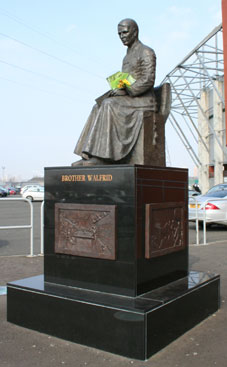 |
Celtic Park, Glasgow 2005 Bronze, granite. 3m 20cm x 1m 60 cm x 1m 60 cm Commissioned by the Celtic Football Club Supporters' Association. Commemorative bronze sculpture of Celtic Football Club founder, Brother Walfrid, on granite plinth with four figurative plinth plaques. |
|
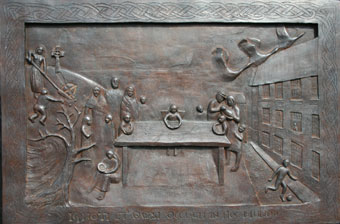 |
Ignoti et quasi occulti in hoc mundo ('Unknown and hidden in the world' - Marist Brother motto)
|
|
Detail from Brother Walfrid's Veil. Scroll down for more info... |
'It's not his creed nor nationality that counts, it's the man himself' Willie Maley |
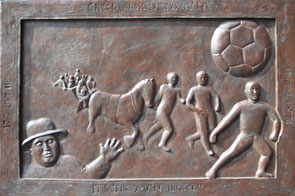 |
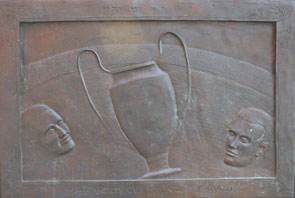 |
'Pure, beautiful , inventive football' Jock Stein |
|
You'll never walk alone. |
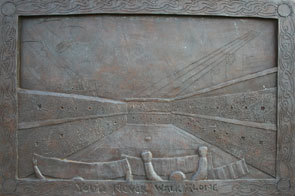 |
|
Making the sculpture of Brother Walfrid:Expanding the Space of a TentI recently signed up for the Marist Brothers’email bulletin and periodically receive their news from all over the world. The latest release began with testimonies in their own words from Yashita, Rasanjan, Dilath, Saleem and Sumar – children who had been affected by the Boxing Day Tsunami. Marist Brothers working in the State of Tamil Nadu explained how they had helped to clear up the rubbish after the waves had struck and counselled children: ‘We just used a simple method: callng them by their first name, listening and talking to them in their own language, allowing them to tell their sad stories, to empathise with them’. Another story, from an educational project for children and young people at risk in Barcelona, tells of the ‘daily, simple, constant work’ that constitutes the Brothers’ commitment. Another, from Australia, talks about the Marist Solidarity Campaign sensitising young people to justice and peace – processes ‘usually conducted during Lent’. An item from Columbia explains how the Marist Community in Medellin has just excepted eleven new members, thereby ‘expanding the space of its tent’ and talked of the related challenge of ‘expanding our heart’. I have always thought of making a sculpture as exploring the space of a tent. The boundaries are shifting, indefinable, fluid. There is usually a letting go – of previous ideas, of old models. It’s sometimes painful. But I also know from the process of bronze casting that it is necessary. The original clay sculpture will be destroyed in the process of casting. It is encased in a plaster mould, transformed into wax, encased again and blasted with heat until the wax is melted, to create a space only a few millimetres wide. Molten bronze is poured into this space. When the bronze is cooled the plaster is chipped away with mallets and gouges. Bronze casting is a process that has not changed for thousands of years. Ancient bronze sculptures have been found all over the world from Africa to India to Asia to the continent of Europe. But even though a bronze sculpture can outlast us all, as I see it, its only significance is when it helps us to value the challenge of expanding our heart, always a two-way process. There are plenty of bronze sculptures that have been rightly torn down, misguided symbols of errant thinking. As I write this, at the beginning of March 2005, during Lent, with the daffodils beginning, the Brother Walfrid sculpture is at an early stage, still defining its edges and delineating its place. Already there has been heart-ache, joy, sorrow and sleepless nights and the scale model is still only just out fresh from its mounds of clay! I admit I’m a novice at football, but I’m learning. Last night I went to see the game with Dundee. 7.45 kick off, under the flood lights. That shock, the intake of breath, as you walk into the arena and see it filled to brimming with other supporters. The focus on the ball magicked by the players around this patch of lit-up turf under the night sky. Bobo Balde, the man of the match, scoring two of Celtic’s three goals, one of them in the last frantic minutes of the game. It was clever of Brother Walfrid to see the potential of all that passion. Clever to tap into it, to let it bond and support the East End of Glasgow. And though the game, the pitch and the Club itself may have changed since its foundation in 1888, it seems that its heart is constant. I’ve pored over the famous photograph of Brother Walfrid and studied and read as much as I can about the man and the origin of the Club. I know it is a big responsibility to try to represent in bronze and stone his shrewd imagination. I’ve just checked and today, March 3rd, is a Feast Day for Saint Katherine Drexel (1858-1955). Mother Drexel was active as a teacher, sounds like a social firebrand. She opened schools in the west for native Americans and in the south for African Americans and founded Xavier University in New Orleans. In many ways it seems that her mission has similarities with the Marists’. Hands-on, elbows-greased nurture of an international nature, a marriage of the material and the spiritual. As I move into the next phase of making the sculpture, I will keep in mind Saint Katherine, my namesake’s, inspiration in trying to do justice to the image of Brother Walfrid. It seems like a good day to begin. Written for Brother Walfrid Memorial Booklet, during the making of the sculpture. |
||
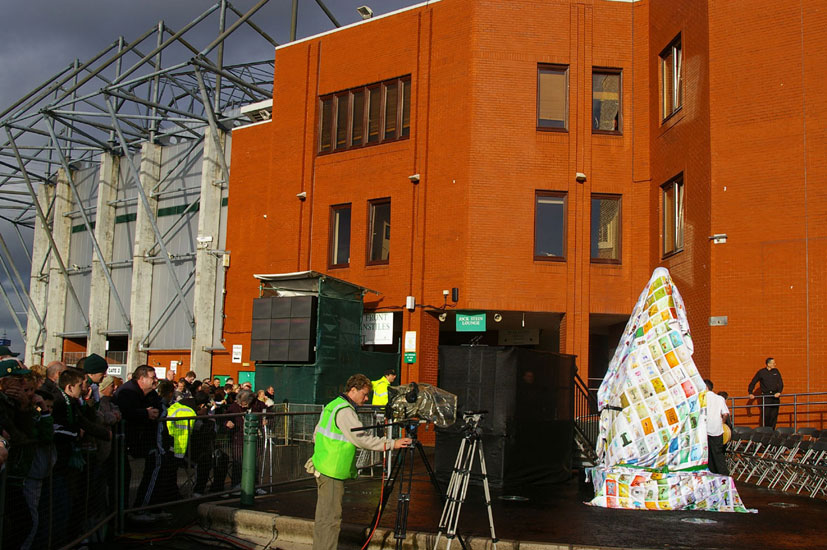 |
During the making of Brother Walfrid, I worked with fellow artists on the Veil for the Unveiling Ceremony. Artists did visual art workshops with children in schools and community centres throughout Glasgow to make drawings of their fantasy football strip. The drawings were then printed onto the Veil at Glasgow School of Art. The Veil Project received a Sense Over Sectarianism Award in 2006. |
|
| Spectators begin to gather for the unveiling. Several thousand people attended. | ||
